The second influence was finding Robin Lee Graham's memoir, Dove, in the local library. Nothing had ever caught my imagination like the adventure of the world's youngest (at the time) solo-circumnavigator. I've read Dove several times since, and Graham was my numero uno hero throughout most of my adult life.
A far greater influence, though, was the first sailboat I fell in love with, Picaroon, a salty little 18-foot sloop, also found in a book, Sam Rabl's Boatbuilding In Your Own Backyard. http://www.amazon.com/Boat-Building-Your-Own-Backyard/dp/0685706710 Rabl had designed Picaroon for himself back in the 1920s or so. His book, written for amateur boatbuilders, was a treasure trove of information and that was the reason why building the thing became an integral part of the dream.
Picaroon:
I've wanted to build something all my life, remember...
I went so far as to loft Picaroon's lines on rosin paper laid out in my dining room -- this, when we were living 700 miles from the the water. Oh, we were only an hour and a half away from Lake Michigan, but to me "the water" means "the ocean," and Lake Michigan, despite having tides (though very small), currents, and waves (sometimes very big), is not salty and it is, well, not landlocked, exactly. But it might as well be.
A passage in Rabl's book that sparked my interest read,
"Picaroon is that same little boat that Brice Johnson built for me in Cambridge over thirty years ago, the same boat in which Hank Hemingway had his great adventure in the Gulf of Mexico, sailing from Mobile to Neuvitas in Cuba. The same tabloid cruiser of which Westy Farmer wrote: “A delight to the eyes of every sailorman,” and to which the late Charles Hall attached the title of the “Perennial Picaroon”. She is the same little ship that was destined to become world-famous and to have been built on every continent of this globe."In a Duckwork's article about Cherub, Westy Farmer's 23-foot update of Picaroon, there's more info:
During the early twenties, Rabl designed a hard-chine I8-foot cruising sloop for his own use. After sailing her on the Chesapeake in all kinds of weather, he declared, ‘She’s the slickest handling little piece of wood I ever got my hands on.’ That was the first Picaroon, a boat that could be built in those days for about $1000. The design won worldwide fame for Rabl, following the publication of her plans in the June 25, 1925 issue of Motor Boating. No wonder, she proved to be a remarkably able little craft. Ernest Hemingway’s brother, Hank, built one in Mobile, Alabama and sailed her safely to Cuba through a storm that blew him almost to the Yucatan Peninsula. Other Picaroon sailors have told similar tales.A Google search shows that Picaroons are still being built...
Precious is a modified Picaroon built around 1980, and a saltier little vessel I've never seen:
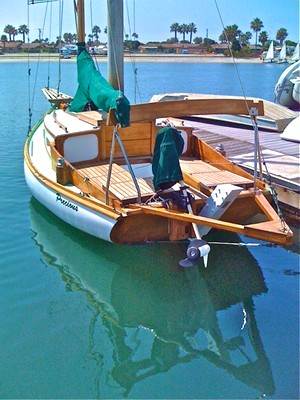
Patience is a Picaroon II, with the rounded bilge rather than the original hard chines:
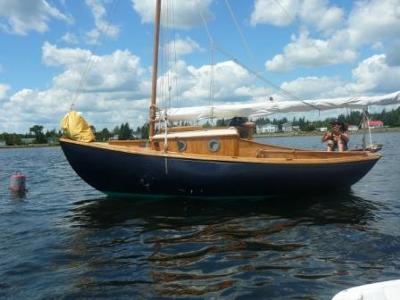
As one online observer has noted, "Looks like a little pirate ship after the cabin and decks are on."
Back in the 1970s, I didn't have the skills or the tools to build Picaroon, or any other boat, so what did I do? I ordered the plans for a boat I really couldn't build, the 31-foot double-ender Tahiti ketch designed by John Hanna.
Just owning the plans made me feel a little bit closer to Papeete and the Southern Cross.
Thousands have been built over the decades, by professionals and amateurs, and the design has been tweaked and improved.
Very likely, I also still have around here somewhere the original magazine plans for Starlite, a 27 foot v-bottom, hard chine sloop -- a very good-looking boat, but like the others, beyond my ability to create. She was designed by William D. Jackson, who wrote the article with the instructions for building. According to several posts at WoodenBoat Forums, several people have built to these plans, but I have been unable to find photos of any Star-Lite, except those that appear with the plans.
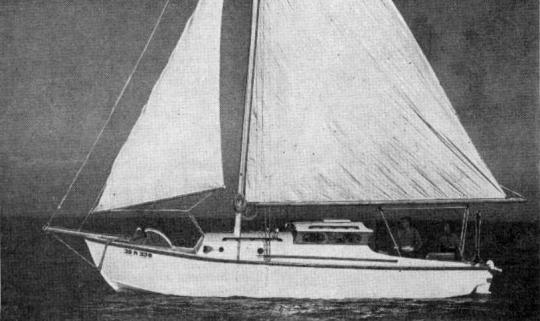
Throughout the 70s and 80s, I sustained this interest in boats by reading some marvelous books. Ferenc Máté's From a Bare Hull and Linn and Larry Pardey's Cruising in Seraffyn. These authors built their boats, and I learned a lot from their instructions. Also read Chappell's Yacht Designing and Planning. Street's The Ocean Sailing Yacht, and numerous other boaty books.
The Pardey's Seraffyn, a Bristol Channel Cutter designed by Lyle Hess.

Also read just general sea tales, in addition to my re-reads of Dove -- Wanderer by Sterling Hayden; Airborne by William F. Buckley; Joshua Slocum's Sailing Alone Around the World... other stories I remember but whose titles and authors escape me.
Sometimes, when in deep dream mode, I would imagine what it must be like to have the money to buy an ocean-going yacht, like the Norsea 27, with its exquisite lapstrake siding, or the utterly beautiful little Flicka, designed by Bruce Bingham... Both of these gorgeous vessels are trailerable...
Nor'sea 27

Flicka



But, alas, there was a problem with both of these last two boats. Building it was an integral part of the dream, remember.
And there was an even greater problem with boats and sailing -- all of it -- than that.
I'm skeered of the water.
It draws me, but it skeers me. I don't think I could cross the 137 miles across the Gulf Stream from the mainland USA to Bimini on a ginormous cruise ship without fear.
Ah, but coastal cruising ... that I can do. And have done it.
In 1980, moving from 700 miles inland to the Florida coast was like entering boat heaven. Within six months of our arrival here, my brother-in-law and I were invited by his friend, Jim, to help sail Jim's Hunter 27 from Ft. Walton Beach to his backyard boat dock on the Blackwater River in Milton.
It was a clear, crisp fall Saturday as we cruised westward on Santa Rosa Sound, under power and sail, and turned into Pensacola Bay. Where it met East Bay, Jim gave me the helm and went below for a quick snooze. My brother-in-law was already in the cabin sawing logs. Alone on deck, standing at the helm with the big stainless steel wheel in my hands, the motor stilled and the sails firm as we barrelled along on a port tack, I was experiencing a dream come true.
Hunter 27

Hubs and I even had a little sailboat of our own for a while -- a 1977 South Coast Seacraft 22, trailerable fiberglass sailboat that seemed great when we first signed on the dotted line, but whose flaws gradually revealed themselves -- barely sitting headroom inside grew cramped very quickly; a motor with no reverse (you were supposed to just whip the motor around 180 degrees to "back up" -- nice in theory but never worked, and usually ended up putting the boat in a stand of cattails instead of her berth; and rot in a wooden partial bulkhead where the internal chainplate attached, which I, the great, imagined boatbuilder, did not know how to repair. We sailed her a few times on East Bay, but she stayed mostly on the trailer, and eventually, we sold her.
South Coast 22 -- ours was yellow.

Eventually, I happened up on a set of plans that looked like something I could do -- a Weekender or Vacationer from Stevenson Projects designed for plywood building by really, really amateur builders. The first thing I notice about these little vessels is that they're just as cute as bugs, and would look very salty out on Pensacola Bay. The second thing is that headroom is so scarce in these pocket cruisers there are no seats -- you just sit (and sleep) right on the sole.
Weekender
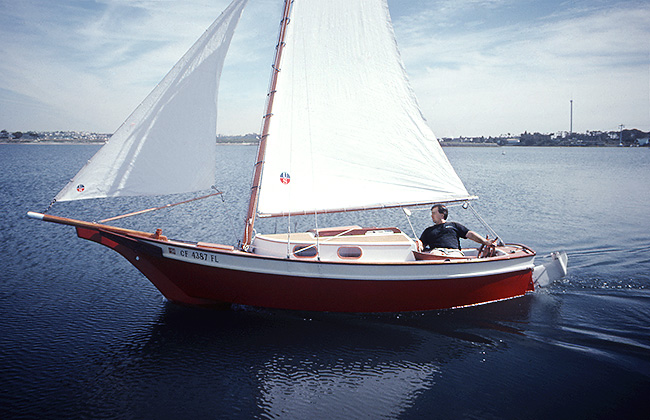
Vacationer
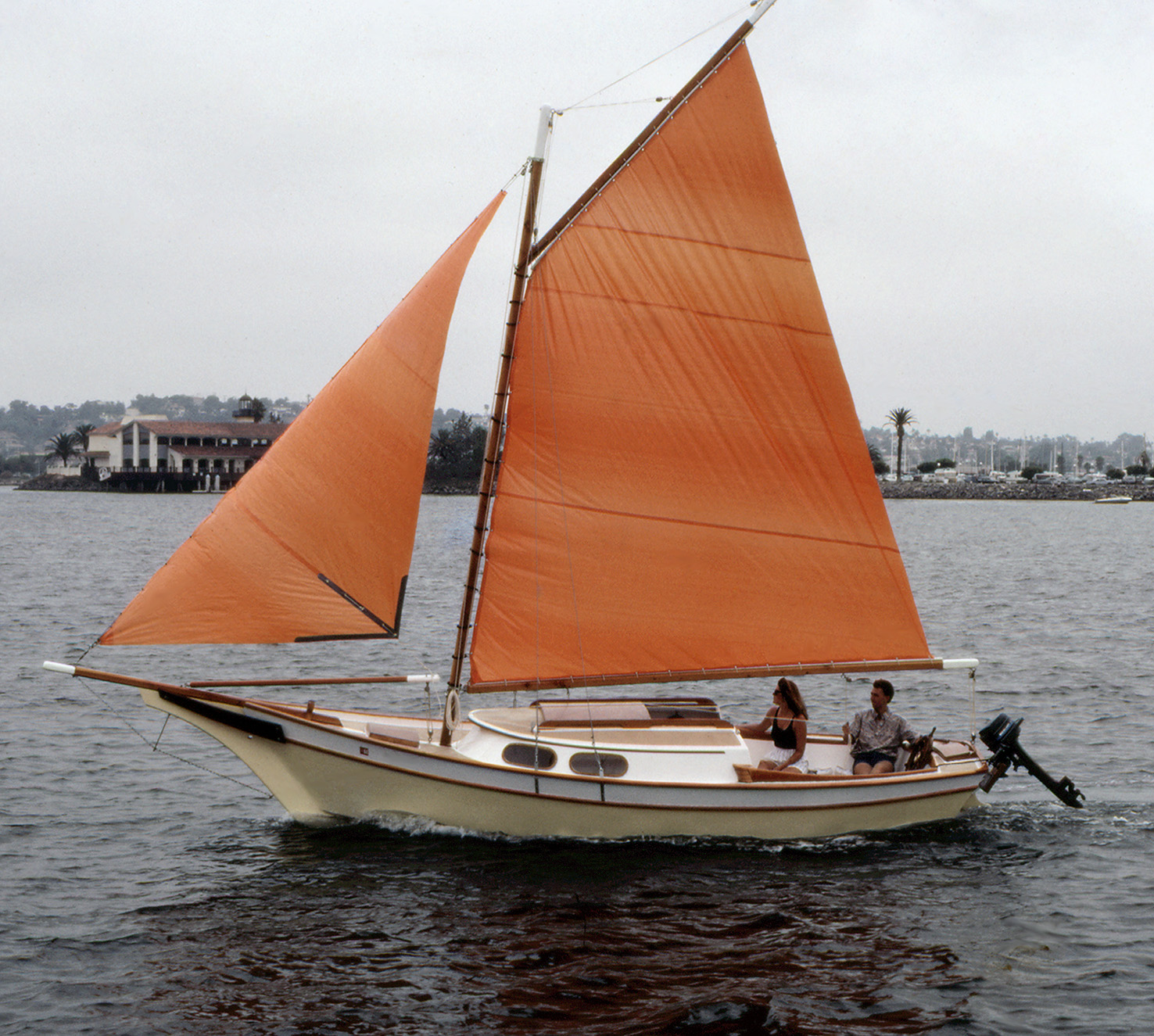
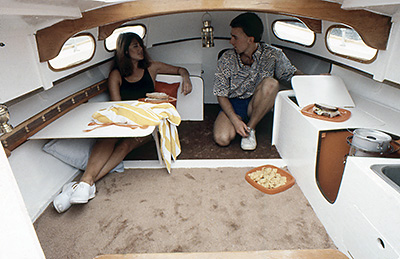
Nevertheless, I was game to try building one of these things. Some time before that, a friend told me about somebody selling an entire garage of power tools cheap, and I had bought them, so at least in that sense, I was prepared.
But before I could even order the plans, I new distraction popped up. I met a fellow running for Congress, and I got bit, hard, by the politics bug. I became a campaign volunteer, and then a Congressional staffer, and by the time I got burnt out on politics, boats had been superceded by Confederate heritage, and an accompanying travel trailer bug.
So I've come full circle -- with one difference. The boat resurgence isn't for an ocean sailing yacht or even a pocket cruiser, or any kind of sailboat...
Check Part Three to see what kind of boat has caught my attention....



Corey/Champ leaves a comment: "Connie, if brains were dynamite, you couldn't even blow your nose!"
ReplyDeleteThere you have a perfect picture of flogger devotion to "history." It's hot history with them, it's hatred they don't even try to disguise. The love insult far more than history, thrive on it. This is why I don't take their insistence we're not about history, but heritage. THEY're not about history, either, but hate.
The question is, why? I can only assume that, since most of them have leftist tendencies, hate is the centerpiece of leftism.
That's certainly what drives the SPLC...the grandaddy of all hate groups.
Anybody see anything in this post that would explain this outburst of hate from Corey/Champ? Without that, I have to conclude it begins and ends with him, and really has nothing to do with me or this post.
Delete